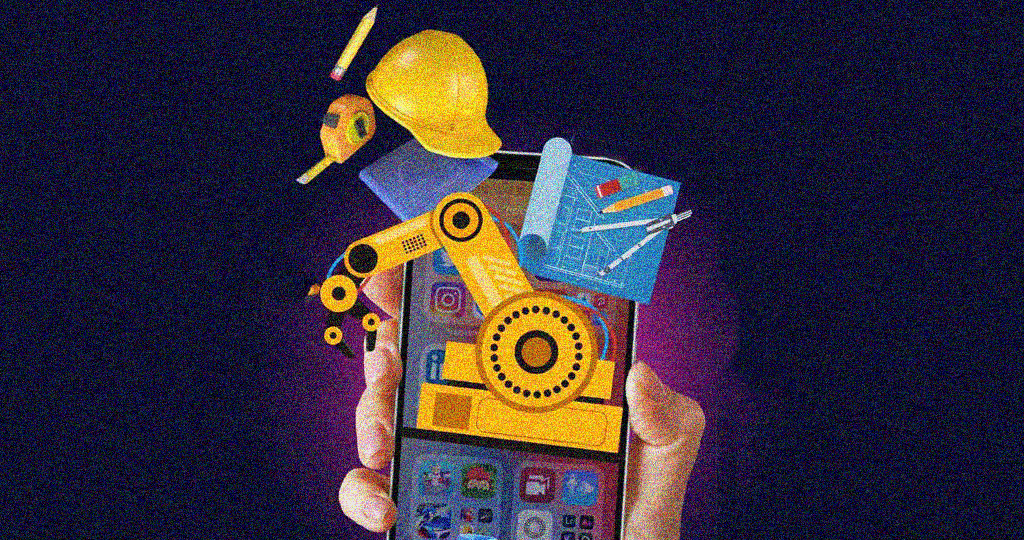Key Takeaways
Mobile app trends prioritize smarter apps, focusing on emerging technologies and APIs for enhanced user experiences and functionalities.
5G accelerates mobile apps with faster speeds and IoT support, promising innovative AR/VR experiences and efficient user interactions.
AI and ML personalize mobile apps, with chatbots and healthcare benefiting from streamlined development and user engagement.
AR/VR goes beyond entertainment, boosting productivity and learning in manufacturing, education, and interactive mobile apps.
Cloud computing enables cross-platform development, streamlining app creation for efficient, performance-optimized solutions.
A lot of new technology trends will start to emerge as users expect more from what they get through mobile apps. Mobile app development trends constantly evolve as new Android and iOS app versions are released. The creation of mobile apps is currently focusing on AI, ML, AR/VR, and other similar technologies and APIs that help the apps grow smarter. Are you excited to explore the mobile app development trends in detail? The global pandemic has accelerated the transition toward mobile-first solutions across all industries. The demand for high-quality mobile apps offering this capability grows as more modern customers use their smartphones to pay their bills, connect with coworkers through various messenger apps, and make new friends. People want their operations to be private, safe, and secure due to the numerous security breaches and other vulnerable events in this area.
Moreover, your app needs a better user experience to increase customer retention. The creation of mobile apps employing new app technology is expanding rapidly. Developers are building solutions to assist new businesses in building IoT apps, mobile apps, on-demand apps, web apps, and much more.
The future of mobile app development looks very promising. According to a study, the anticipated mobile app market volume by 2026 is $542.80 billion, with total revenue expected to expand at a CAGR of 6.58% yearly from 2022 to 2026. To keep your enterprise at the forefront of innovation in this fast-paced market, it is essential to stay updated on these top mobile app industry trends.
What are the Top Mobile App Development Trends to watch out for?
Trend#1. 5G
The fourth industrial revolution began with the arrival of 5G, marking a significant impact on the usage of mobile apps around the world. Compared to the fourth and fifth generations of cellular networks, the fifth generation will significantly increase speed and reliability, making it a game-changer for on-demand mobile app development. Thanks to network speeds that are up to 10 times faster and latencies that are 50% lower, 5G will enable AR/VR, self-driving cars, the IoT, and other applications, ushering in a new era of innovation in mobile app development. With 5G's speed, the operations that drain smartphone batteries will no longer be in use, allowing for more efficient and sustainable mobile app experiences. Furthermore, with 5G's higher radio frequency and shorter wavelengths, mobile apps will perform more precisely in geo-targeting and geofencing, opening up new possibilities for location-based services. This optimization enhances mobile streaming and app functionality, enabling Android app developers to include additional features without affecting the app's performance, a critical aspect of staying updated on the latest trends in mobile application development. Future apps will leverage these capabilities to accomplish tasks we had no idea were feasible, reshaping the landscape of mobile app development and the user experience.
Trend#2. AI & ML
Machine learning (ML) helps expedite app development by decreasing development time while eliminating the risk of human errors. AI and ML have already changed consumer experiences by infusing personalized elements like chatbots. This advancement is indicative of the latest trends in healthcare app development. Such innovations enhance user engagement and increase efficiency, offering significant advantages in several sectors.
Trend#3. AR/VR
Since the onset of COVID-19 in 2020, various industries, including manufacturing, has led to the adoption of augmented reality (AR) and virtual reality (VR) technologies. Many manufacturing firms have started using AR and VR to develop virtual production lines with additional virtual workers. Consequently, some manufacturing companies have reported increased productivity and reduced operational costs. Sales representatives and service providers can now engage with their customers on a more personal level, thanks to AR/VR mobile apps. These technologies help enhance learning opportunities by making educational technology (EdTech) apps more exciting and engaging in the upcoming years.
Trend#4. Chatbots
Thanks to chatbots, it has become simple for users to receive responses 24/7. Chatbots are already widely used in enterprises and have become essential in Android and iOS app development. Chatbot applications from iOS app development services are commonly employed to enhance customer service by providing faster responses to clients. As AI, ML, and natural language processing (NLP) continue to advance, chatbots are expected to become even more efficient. By using tools like sentiment analysis, semantic search, and facial and voice recognition, interactions with chatbots will become more natural. Implementing these chatbots in mobile app development for retail businesses will be an amazing addition.
Trend#5. Cloud Computing
Cloud computing is a valuable technology to integrate into mobile app development, especially in the context of current mobile app trends. With cloud-based solutions, there's no longer a need to develop separate apps for various platforms and smartphones. Applications utilizing cloud computing can run smoothly through web browsers, providing seamless functionality across multiple platforms. Data is not stored on the user's device but is securely hosted on a server, accessible over the internet. Cloud mobile app development offers several advantages, one key benefit of cloud-based apps is that they free up mobile storage space for other purposes. Their efficient operation enhances mobile device performance and ensures continuous access to apps hosted on a central server. All essential information and data are stored on the server, accessible at any time. The risk of data loss due to app crashes is also minimized since the server directly manages the app's operation, thereby providing data security.
Trend#6. Cross-Platform Mobile App Development
The creation of cross-platform apps is continually evolving. An enterprise can create and deliver an app across many platforms, including the web, by utilizing a cross-platform mobile app development method. As a result, it is possible to target both the iOS and Android platforms by creating a single app. Another win-win scenario for building cross-platform apps is the speedy development process. Cross-platform mobile app development frameworks have the potential to accelerate the development process by using a single source code for multiple platforms helps accelerate development. Mobile apps run on many platforms that are fully compatible and can benefit from different plugins connected to cloud setups.
Trend#7. Edge Computing
The evolution from traditional cloud computing to edge computing represents a prominent shift in technology. Since the cloud is highly centralized, it presents significant latency challenges, especially in the context of the technologies that 5G offers. However, utilizing edge computing is one of the most effective ways to address these demands and is a key part of current cloud computing trends. With extensive use of edge computing, your device connects to the cloud, which helps alleviate some of the latency issues. This means that technologies like IoT, autonomous vehicles, and the exciting new wireless possibilities of 5G will all benefit from guidance provided by edge-powered devices, reflecting the influence of cloud computing trends.
Trend#8. IoT
IoT stands out as one of the most significant mobile app development trends, offering users and developers a wealth of opportunities in recent years. It facilitates communication and interaction at various levels, with IoT technology and internet connectivity integrated into nearly every device. This has proven beneficial across a wide range of sectors, including e-commerce, healthcare, logistics, and more. The exchange of data between devices ensures a positive user experience, and IoT has left a profound impact on the app development industry. The enhanced visibility resulting from data sharing has significantly elevated the quality of mobile apps in the modern age.
Trend#9. Predictive Analytics
Retailers frequently use predictive analytics to customize their products for every customer. It predicts future events using currently available data and techniques like data mining, statistics, and machine learning. With this data, developers can make decisions that will make their mobile apps popular with users, such as adding or eliminating features. For instance, predictive analytics is also used in areas other than retail to combat the coronavirus threat. To identify which patients are most likely to become infected with the virus, which ones will develop into the most severe cases, and even which ones are most likely to die from it, medical experts and institutions are looking into the potential of predictive analytics.
Trend#10. Progressive Web Apps
Another mobile app innovation anticipated to gain more attention in the upcoming years is Progressive Web Apps (PWAs). PWAs serve as a bridge between native mobile applications and web pages. They offer several advantages, including minimal storage requirements, faster loading times, and reduced reliance on network connectivity. Although not a new trend in the world of mobile app development, PWAs are here to stay and will continue to support businesses in achieving their objectives cost-effectively. One of the key benefits of PWAs is their ease of development. As they are essentially web pages with app functionality, they are more accessible and simpler to design than traditional apps. PWAs are highly versatile, automatically update themselves, and provide an interactive user experience.
Final Thoughts:
With several innovative mobile app development trends taking center stage. As the demand for smarter, more efficient apps grows, industry professionals are focusing on AI, ML, AR/VR, and other cutting-edge technologies to shape the future of mobile applications. The global pandemic has further accelerated the shift towards mobile-first solutions, highlighting the need for high-quality, secure, and user-friendly apps across various industries. Amid these transformative developments, the role of mobile app developers has never been more important. As businesses strive to innovate and enhance user experiences, the expertise of mobile app developers becomes invaluable. Way2Smile Solutions, a leading mobile app development company in Dubai, stands out as a leading player with its team of dedicated and skilled mobile app developers in Dubai and is at the forefront of driving innovation in the mobile app development industry. With a focus on innovative technologies and a commitment to delivering secure, user-friendly, and high-quality apps, Way2Smile Solutions continues to shape the future of mobile app development in Dubai and the UAE.







